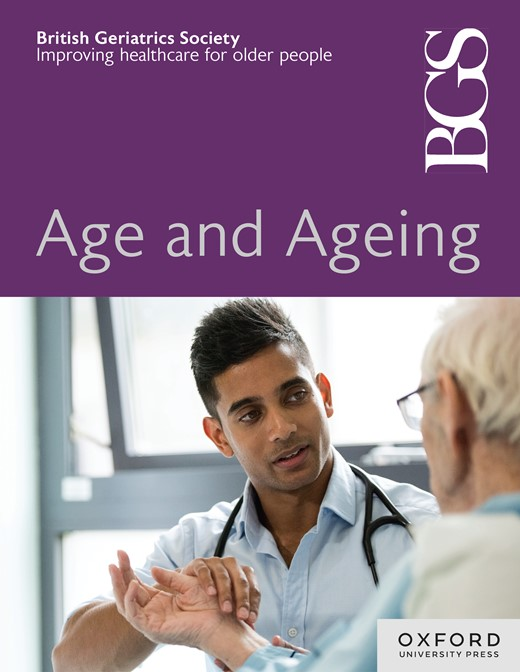Influence of intergenerational social mobility on brain structure and global cognition: findings from the Whitehall II study across 20 years
IF 6
2区 医学
Q1 GERIATRICS & GERONTOLOGY
引用次数: 0
Abstract
Background Whether changes in socioeconomic position (SEP) across generations, i.e. intergenerational social mobility, influence brain degeneration and cognition in later life is unclear. Objective To examine the association of social mobility, brain grey matter structure and global cognition. Methods We analysed T1 brain MRI data of 771 old adults (69.8 ± 5.2 years) from the Whitehall II MRI substudy, with MRI data collected between 2012 and 2016. Social mobility was defined by SEP changes from their fathers’ generation to mid-life status. Brain structural outcomes include grey matter (GM) volume and cortical thickness (CT) covering whole brain. Global cognition was measured by the Mini Mental State Examination. We firstly conducted analysis of covariance to identify regional difference of GM volume and cortical thickness across stable high/low and upward/downward mobility groups, followed with diagonal reference models studying the relationship between mobility and brain cognitive outcomes, apart from SEP origin and destination. We additionally conducted linear mixed models to check mobility interaction over time, where global cognition was derived from three phases across 2002 to 2017. Results Social mobility related to 48 out of the 136 GM volume regions and 4 out of the 68 CT regions. Declined volume was particularly seen in response to downward mobility, whereas no independent association of mobility with global cognition was observed. Conclusion Despite no strong evidence supporting direct influence of mobility on global cognition in later life, imaging findings warranted a severe level of neurodegeneration due to downward mobility from their father’s generation.代际社会流动对大脑结构和全球认知能力的影响:白厅 II 研究 20 年来的发现
背景 社会经济地位(SEP)的代际变化,即代际社会流动性,是否会影响晚年的大脑退化和认知能力,目前尚不清楚。目的 研究社会流动性、大脑灰质结构和整体认知能力之间的关系。方法 我们分析了怀特霍尔 II MRI 子研究中 771 名老年人(69.8 ± 5.2 岁)的 T1 脑 MRI 数据,这些 MRI 数据收集于 2012 年至 2016 年。社会流动性是指从父辈到中年的SEP变化。脑结构结果包括覆盖全脑的灰质(GM)体积和皮质厚度(CT)。总体认知能力通过迷你精神状态检查(Mini Mental State Examination)进行测量。我们首先进行了协方差分析,以确定在稳定的高/低流动组和上/下流动组中,大脑灰质体积和皮层厚度的区域差异,然后使用对角参考模型研究除 SEP 来源地和目的地之外的流动与大脑认知结果之间的关系。此外,我们还建立了线性混合模型来检验流动性随时间变化的交互作用,其中全球认知结果来自 2002 年至 2017 年的三个阶段。结果 社会流动性与 136 个 GM 容量区域中的 48 个和 68 个 CT 区域中的 4 个相关。体量的下降尤其与人口向下流动有关,而人口流动与全球认知并无独立关联。结论 尽管没有强有力的证据支持人口流动对晚年整体认知能力的直接影响,但成像结果证明,父辈的人口向下流动导致了严重的神经退化。
本文章由计算机程序翻译,如有差异,请以英文原文为准。
求助全文
约1分钟内获得全文
求助全文
来源期刊

Age and ageing
医学-老年医学
CiteScore
9.20
自引率
6.00%
发文量
796
审稿时长
4-8 weeks
期刊介绍:
Age and Ageing is an international journal publishing refereed original articles and commissioned reviews on geriatric medicine and gerontology. Its range includes research on ageing and clinical, epidemiological, and psychological aspects of later life.
 求助内容:
求助内容: 应助结果提醒方式:
应助结果提醒方式:


